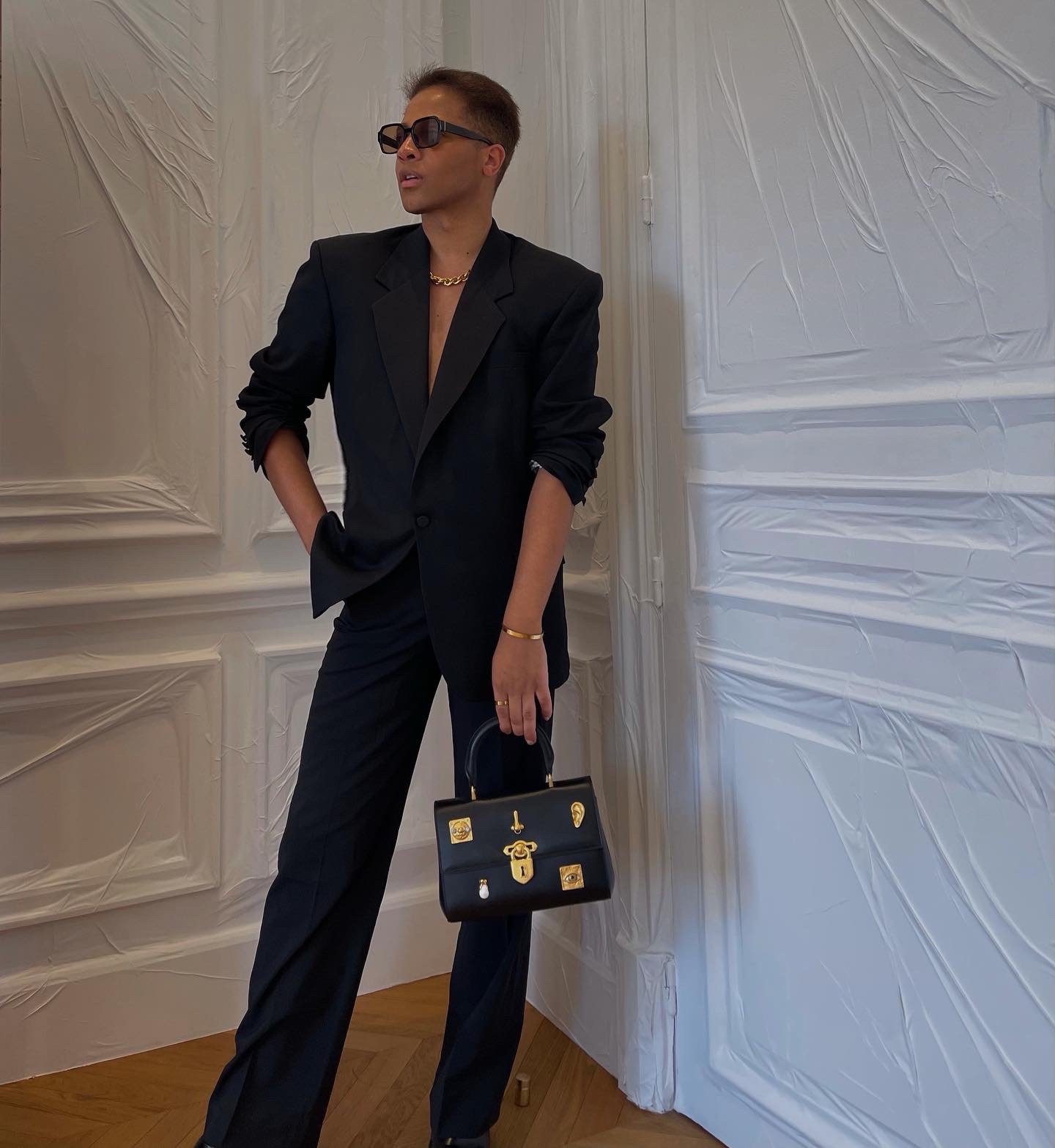

On March 29, the art and fashion crowds, including Thelma Golden (the director and chief curator of The Studio Museum in Harlem) and artist Chloe Wise, stopped by the Whitney Museum of American Art for the opening of the 80th edition of the Whitney Biennial presented by Tiffany & Co., which marked its first since the COVID-19 pandemic began.
The Whitney Biennial, which began in 1932 by the museum’s founder, Gertrude Vanderbilt Whitney, is the institution’s longest-running and most important exhibition. The show can be accredited for cultivating some of today’s most notable American artists, such as Georgia O’Keeffe. The museum’s curators survey the best and most influential American art (often by younger and emerging artists) across the country and select a deep theme that reflects society at the time for the exhibit.
This year’s Biennial, titled “Quiet As It’s Kept” was organized by Whitney curators David Breslin and Adrienne Edwards and focuses on the notion of what it means to be American today. The duo brought together 63 artists spanning generations and geographic borders (it features more international artists than in previous editions), including Belgium artist Harold Ancart, American contemporary artist Jonathan Berger, to New-Gen artist and activist Emily Barker.
“We began planning this Biennial in late 2019: before Covid and its reeling effects, before the uprisings demanding racial justice, before the widespread questioning of institutions and their structures, before the 2020 presidential election,” said Breslin and Edwards in a statement. “Although underlying conditions are not new, their overlap, their intensity, and their sheer ubiquity created a context in which past, present, and future folded into one another. We organized this Biennial to reflect these precarious and improvised times.”
The show mainly takes place on the museum’s fifth and sixth floors, which contrast one another. The fifth floor is an open, light-filled space with contemporary art along the room’s four walls and showcased on custom stands. The sixth floor features black walls, black carpeting, and dim lighting with temporary walls to create hallways and alcove spaces between each exhibit. The latter’s design reflects the bleak times we’ve collectively endured over the past two years.
Ahead, check out a few of the artists you can expect to see at the 2022 Whitney Biennial, which opens to the public on April 6 and runs through June 5 at the Whitney Museum in New York.
Harold Ancart, The Guiding Light (2021)

Location: Floor 5
Born 1980 in Brussels, Belgium. Lives in New York, NY: Belgian-born New York-based artist Harold Ancart’s work The Guiding Light is the perfect way to cap off the bright and open fifth floor curation. Like most of Ancart’s art, extra time is encouraged to take in the depths of his work for viewers to make their own meaning of the design. For Ancart, he drew upon the objects of “fire, flowers, and the horizon,” which were subjects of “human fixation” before screens took over our world.
Matt Connors, Body Forth (2021)
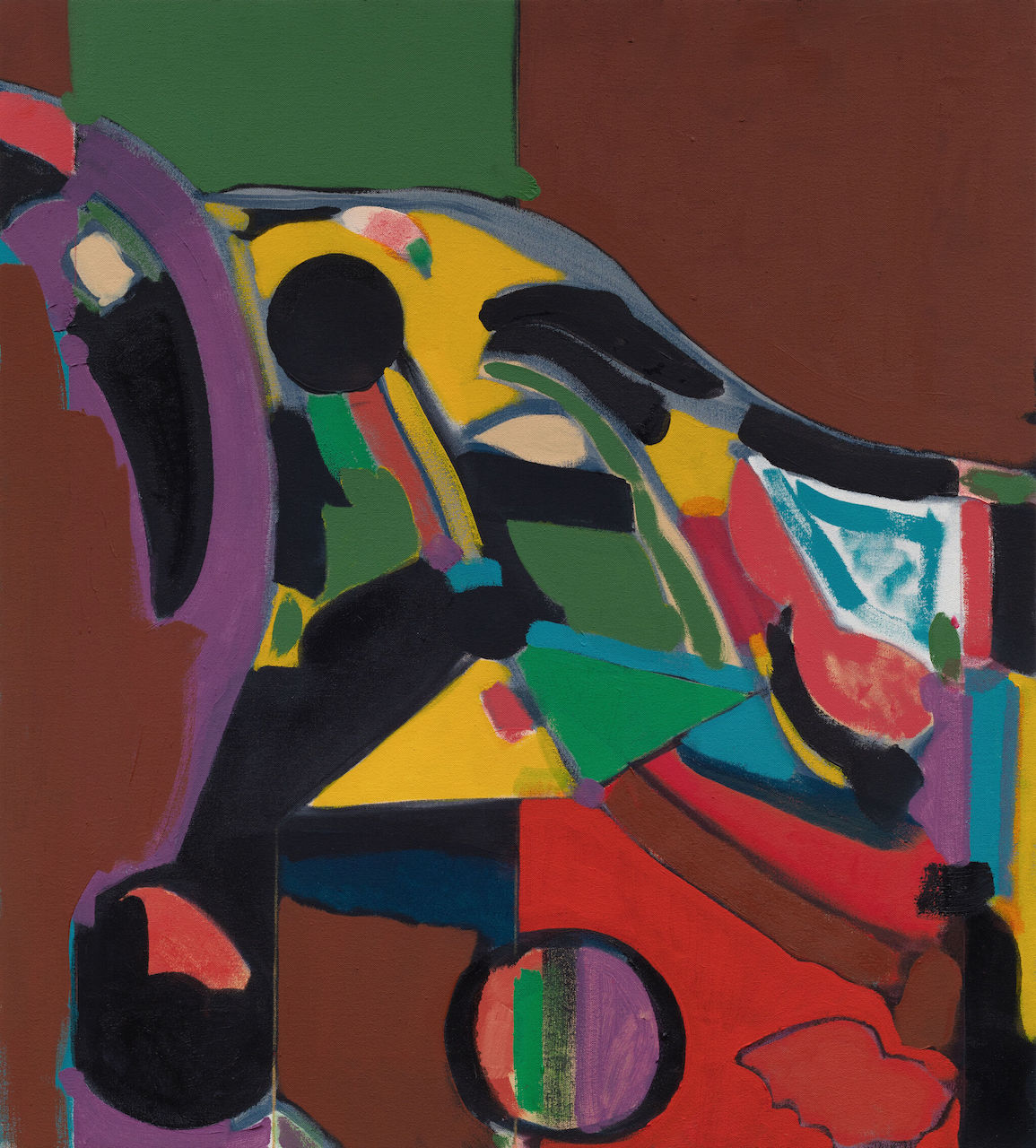
Location: Floor 5
Born 1973 in Chicago, IL. Lives in New York, NY, and Los Angeles, CA: Painting is sometimes considered a reflection of identity, but for Connors, as the Whitney reports, he imagines the act of painting as a proposal for how identity comes to be. He has spoken of his paintings being queer in that “they’re a becoming or an unfolding—often even a failing—rather than an endpoint.”
Emily Barker, Kitchen (2019)
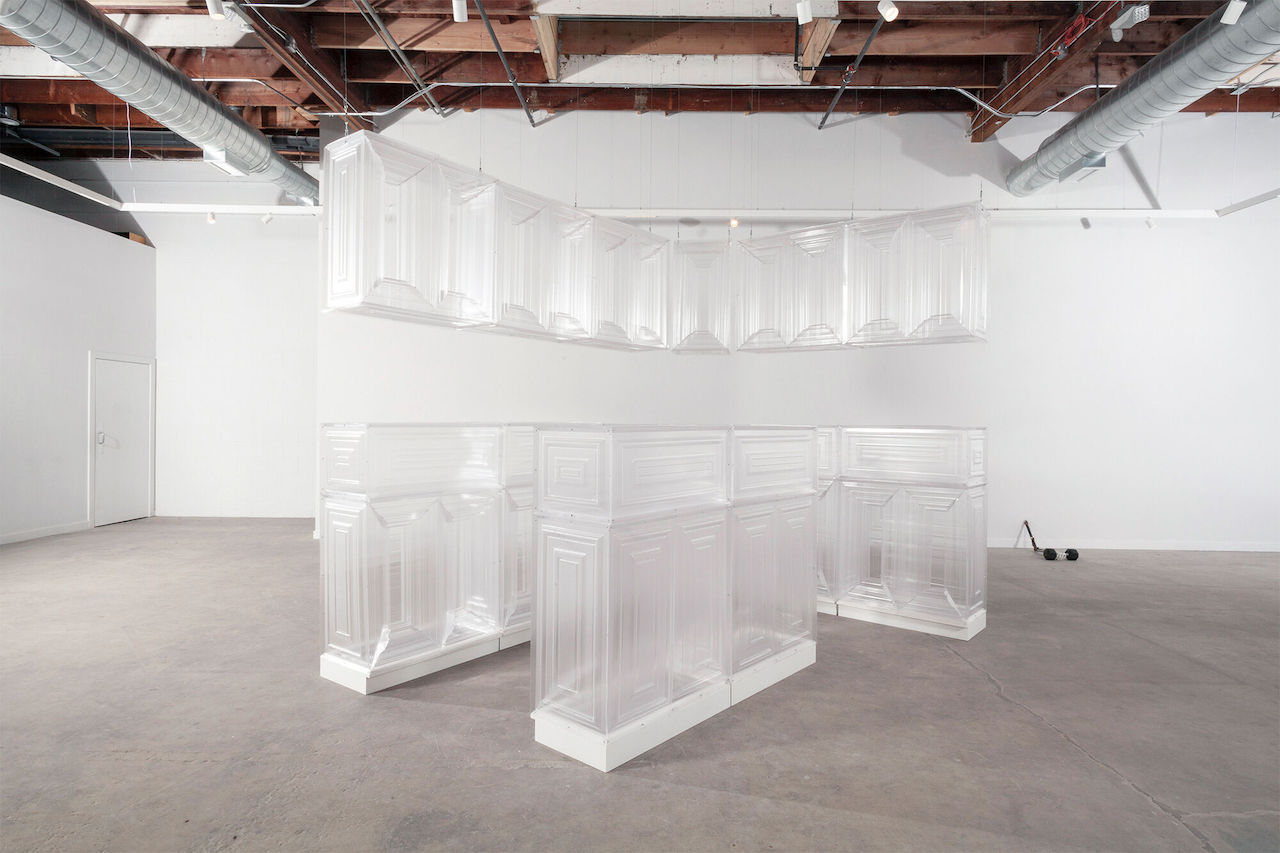
Location: Floor 5
Born 1992 in San Diego, CA. Lives in Los Angeles, CA: Artist and disability advocate Emily Barker based Kitchen on their own experiences using a wheelchair, exaggerating the height of the countertops — which, at 5’9”, are the average height of adult men in the U.S. Barker aims to show how “the seemingly mundane built environment and the mass production of objects harms people every day,” the Whitney explains. Barker is drawn to the materiality of translucent plastic for both practical reasons (it’s lightweight) and expressive ones. “I want people to experience this glimmering, transparent, massive three-dimensional object catching the light and their first impression to be one of atmospheric formal beauty,” Barker said.
Denyse Thomasos,Displaced Burial / Burial at Gorée (1993)
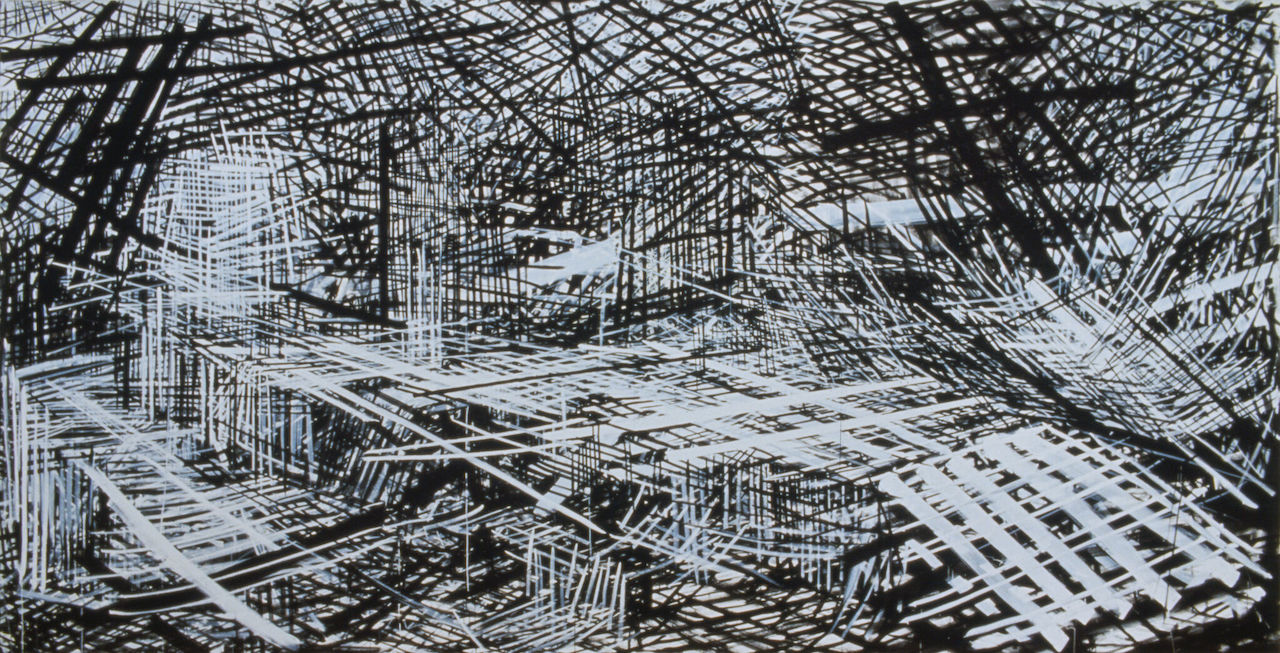
Location: Floor 6
Born 1964 in Port of Spain, Trinidad and Tobago. Died 2012 in New York, NY: As soon as you step off the elevator on the sixth floor you’re met with Denyse Thomasos’ distinct visual piece of work. The painting fits the floor’s darker theme creating “spatial distortion, a sense of chaos, and the intensity of events that are impossible to represent,” the Whitney explains. “I used lines in deep space to re-create these claustrophobic conditions, leaving no room to breathe,” said Thomasos. “To capture the feeling of confinement, I created three large-scale black-and-white paintings of the structures that were used to contain slaves—and left catastrophic effects on the black psyche: the slave ship, the prison, and the burial site. These became archetypal for me. I began to reconstruct and recycle their forms in all of my works.”
Rebecca Belmore, Prototype for ishkode (fire) (2021)
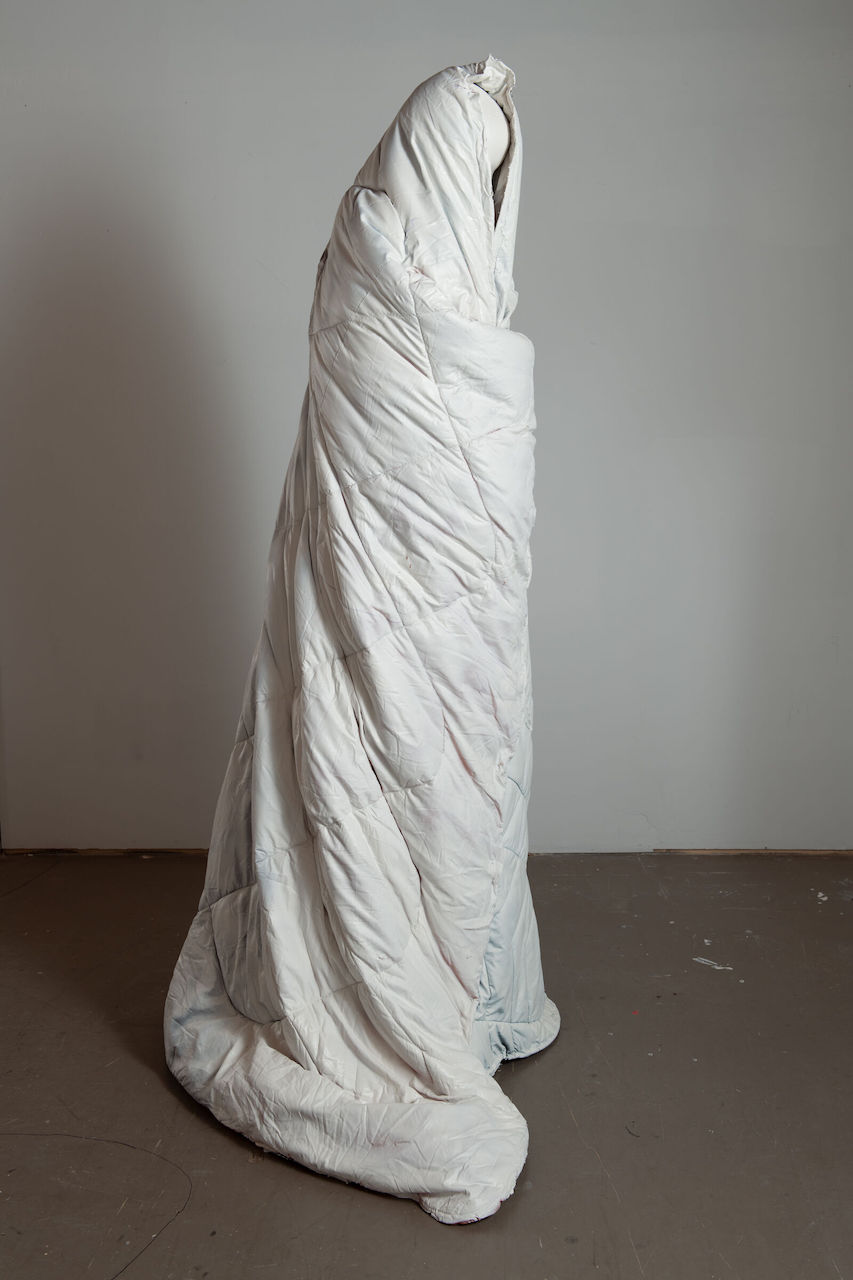
Location: Floor 6
Born 1960 in Upsala, Canada. Lives in Vancouver, Canada: To make the figure in this sculpture, Belmore draped an actual sleeping bag to create the contours of a human body and then cast it in clay. The thousands of empty bullet casings that surround the ceramic form become a protective barrier. “In some way, the work carries an emptiness,” she says. “But at the same time, because it’s a standing figure, I’m hoping that the work contains some positive aspects of this idea that we need to try to deal with violence.”
Jonathan Berger in collaboration with Maria A. Prado and Margaret Morton, with Esther Kaplan, An Introduction to Nameless Love (2019)
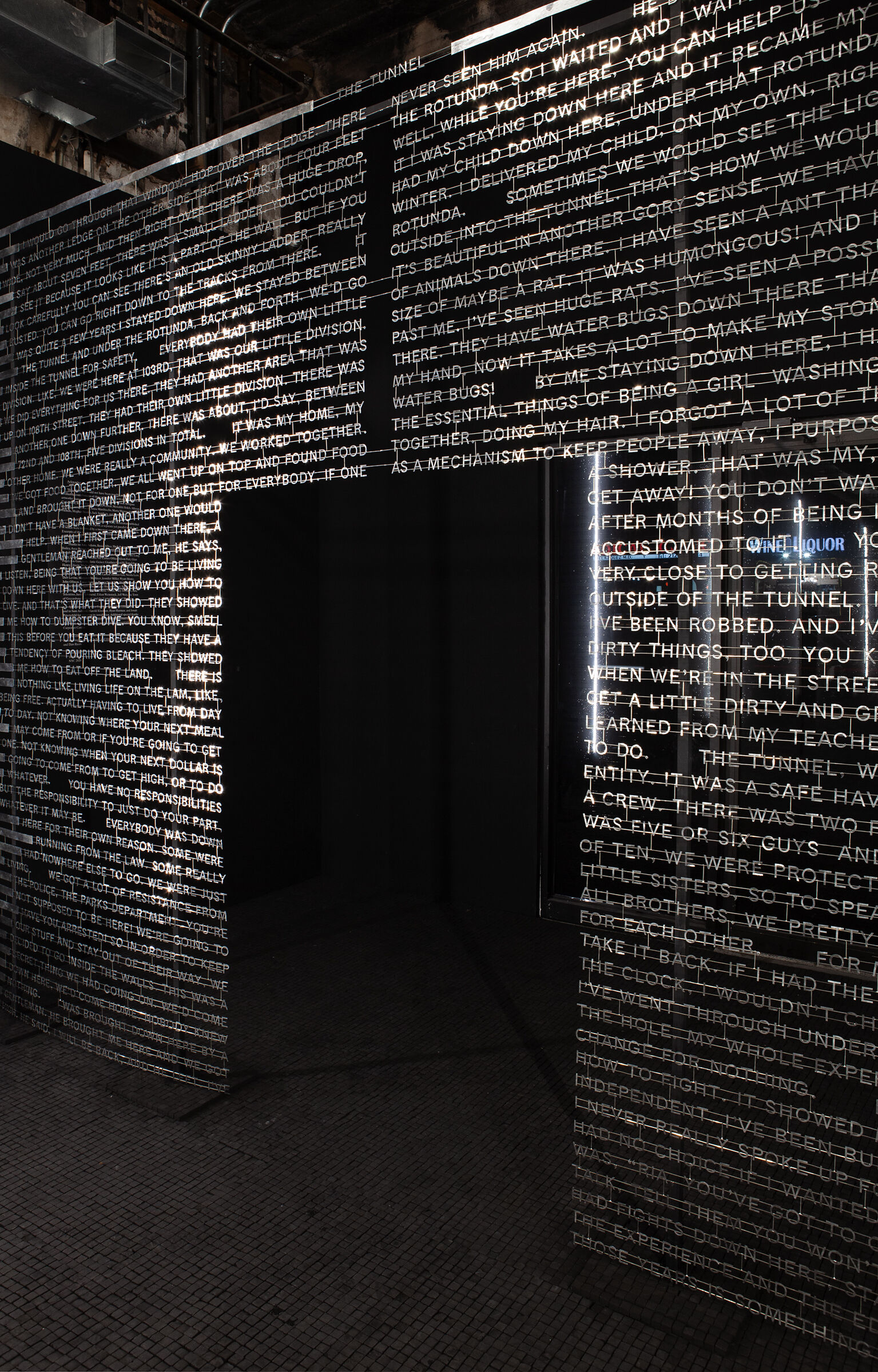
Location: Floor 6
Born 1980 in New York, NY. Lives in New York, NY, and Glover, VT: With only four people allowed in the room of the exhibition at a time, viewers are able to completely immerse themselves in the work of artist Jonathan Berger (for 10 minutes at least). The exhibit features three of six text-based sculptures that explore a transformative experiences of non-romantic love titled, An Introduction to Nameless Love. The three on view here focus on a series of dialogue over the years between Berger and subjects: photographer Margaret Morton and Maria A. Prado, a former resident of the New York underground unhoused community known as the Tunnel; former turtle conservationist Richard Ogust and the first turtle he rescued; and autistic writer and philosopher Mark Utter and his communication supporter and collaborator Emily Anderson. Texts emerged from dialogue between Berger and the subjects over the years. The texts were generated collaboratively by Berger, the individual subjects, and a guest editor of specific significance to each story, including journalist Esther Kaplan and radio and podcast producer Erica Heilman.
Learn more about the 63 artists at the Whitney Museum of American Art.








